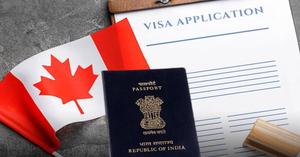With Monday’s deadline for Canadians to file their income taxes for 2022, experts say a new pilot program for the government to automate the process for low-income Canadians is a long overdue step on the road toward doing them automatically for everyone.
In the recent federal budget, the government announced the creation and expansion of a couple of pilot programs aimed at getting millions of low-income Canadians to file their taxes, and giving them access to benefit programs they are entitled to.
The government says as many as 12 per cent of Canadians don’t file their taxes every year, most of whom are low-income Canadians. It’s estimated that non-filers missed out on more than $1.7 billion worth of government rebates and programs they were entitled to in the 2015 tax year alone.
To fix that, Ottawa is beefing up an existing program called File My Return that allows Canadians to file their tax returns by answering a series of simple questions over the telephone. The goal is to triple the uptake on that program to 2 million people annually.
The government will also pilot a new automatic filing service for even more low-income Canadians, including many who would be entitled to government benefit programs like GST rebates and the Canada Child Benefit were they to file.
Elizabeth Mulholland, CEO of Prosper Canada, which works with low-income Canadians, says it’s an idea that’s long overdue.

“We’re excited about it. We had asked for them to do it,” she told CBC News. Not only will Ottawa’s plans help millions of people directly impacted, but she says it’s also good news for Prosper Canada and other agencies because it frees up their time and resources to do other things.
The automated system will allow her group to spend more time helping low-income earners with other issues, as “tax planning is often a gateway to other financial health services,” Mulholland said.
A better way
It may come as a surprise to many Canadians scrambling to file their taxes this weekend, but the Canadian system whereby the onus is on tax filers to assemble their documentation and submit it to the government for verification is the exception, not the rule.
Several dozen countries including Slovenia, Norway, Denmark, Finland, Chile, Portugal, New Zealand and Australia already have systems that are largely automated.
Though they’re all a bit different, in those places filing taxes basically consists of governments filling out information on behalf of filers with what they know of their income and deductions, and then asking them about any other pertinent information that might reduce their tax burden. In some cases, the process takes minutes.
Antoine Genest-Grégoire, a tax policy researcher and PhD candidate at Carleton University, says other countries with more automated tax systems generally have fewer credits and deductions.
“Most people have very simple returns so if we created some kind of automated system, we’re not going to reach 100 per cent of Canadians, but we’re first going to reach those that have the lowest incomes, which have the most to gain,” he told CBC News.
“And then we’re probably going to reach a very large portion of ordinary middle-income Canadians who have fairly simple situations … but right now need to go through filing the whole return, just because of those small steps of complexity in their return.”

Filing taxes automatically for low-income Canadians is not the same thing as filing them automatically for everyone. But Genest-Grégoire says the new program targeting the first group is a slam dunk. “The CRA probably already has most of the information it needs to file for those people. And there’s probably a lot to gain for them if we did so.”
Jennifer Robson, an associate professor of political management at Carleton who authored the paper that came up with the 12 per cent figure noted above, said Canada’s tax filing system hasn’t evolved much since it was set up decades ago.
“We were actually one of the first countries to start doing a pay-as-you-earn model,” she said in an interview. “We switched over to that during the middle of World War Two.”
Taking deductions from paycheques instead of collecting them all at once helped the government stabilize revenue through the year, she said, and it was good for taxpayer “because they didn’t have a big tax bill that they had to save up for and pay at the end of the year.”
Other countries soon copied the model, “but what those other countries did, as they move to pay as you earn, is they also updated their systems so that they could actually do tax returns where … the vast majority of the work is actually done by the tax agency,” Robson said.
As anyone currently riffling through a shoebox full of crinkled receipts can attest, in Canada the onus is on the taxpayer to do the heavy lifting, and pay for help if they need it.
“We’ve kind of inherited this decades-old system that we’ve just gotten used to [but] there’s a big industry that kind of likes this current system,” Robson said. “The CRA is basically the agency that verifies what you’ve told them … but the for-profit tax filing firms are the ones that are there to help you maximize the size of your refund.”
Moving the burden
Ottawa had launched previous initiatives aimed at automating more of the tax filing process, before backing down with little explanation.
Saul Schwartz, a professor of public policy at Carleton who co-authored the report with Robson, says they filed Access-to-Information requests to identify interactions between the tax preparation industry and the government, but those attempts didn’t bear fruit.
“It took several years to find out that almost everything was blacked out,” he said. “We tried to find out if there was intensive lobbying by that industry, with the federal government, but we don’t have any direct evidence that there was.”

 Canada’s tax system places the onus for filing on citizens, with some paying for-profit tax preparers for help. But that’s not the case in other countries. (David Paul Morris/Bloomberg)
Canada’s tax system places the onus for filing on citizens, with some paying for-profit tax preparers for help. But that’s not the case in other countries. (David Paul Morris/Bloomberg)


